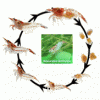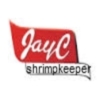cheers to SKF
-
Similar Content
-
- 2 replies
- 1601 views
-
How to Keep Different Neocaridina Shrimp Species in one Tank without Mixing them together
By Shrimp Mania,
- neocaridina shrimp tank
- blue dream
- (and 4 more)
- 3 replies
- 1703 views
-
- 3 replies
- 2737 views
-
- 9 replies
- 3274 views
-
Shrimp Diseases and Diagnosis - INFO ONLY (post on other thread)
By sdlTBfanUK,
- muscular necrosis
- parasites
- (and 4 more)
- 7 replies
- 11272 views
-




Recommended Posts
Create an account or sign in to comment
You need to be a member in order to leave a comment
Create an account
Sign up for a new account in our community. It's easy!
Register a new accountSign in
Already have an account? Sign in here.
Sign In Now